TeleVideo Systems, Inc.
Who was TeleVideo?
Televideo Systems, Inc, was a bay area company that started in the 1970s by producing CRTs and monitors. Using this experience, they then produced dumb terminals, including terminals emulating the popular Lear Siegler line of ADM terminals, Digital VT-52 and VT-100, and many others. They then produced single-user and then multi-user Z-80 and CP/M based systems in the early 1980s. Once the IBM PC became popular, they produced 8088-based PC clone systems, including systems that interoperated with their Z-80 multi-user systems, and then multi-user based 80x86 PC-compatibles.
TeleVideo terminals
TeleVideo's first terminal was the 912, which looked much like the Lear Seigler ADM-3A which it emulated.
TeleVideo later produced the popular 925 and 950 terminals, which were similar looking with different features. They used a 6502 CPU to control the CPU, with a pile of random logic (and later, gate chips) to create the display image from the screen buffer. On earlier terminals, this meant that changes in display attributes (blink, underline, reverse video, half intensity, etc) took up a display position. Doing this helped to reduce the memory required for the display buffer, and reduce the cost of the terminals.
The 970 had a sleek look with an adjustable tilt 14-inch green phosphor CRT, and ANSI, VT-100, and VT-52 emulation modes. The ANSI mode included a form-based mode which worked much like the IBM 3270-style block mode. The system sent a form down, laying out fields on the display, and what type of data could be entered in the fields, which the terminal would verify. When the user was done entering data, they'd hit the SEND key on the keyboard, which would transmit some or all of the screen back to the host. This helped to minimize the interaction with the host system (which with a single Z-80 serving multiple users wasn't particularly fast) and made the system more responsive and user-friendly.
Later terminals such as the 965 would emulate dozens of other terminals. TeleVideo moved away from making straight clones (like the 912 that looked like the ADM 3A that it emulated) towards making their own unique, nicely styled, sleek products.
The 965 is a fairly versatile terminal, which used a 65816 CPU (the 16-bit version of the 6502, just like what the Apple IIgs used) to emulate many different terminals.
One of the more unique terminals that I have found is the TeleVideo pt100 "Personal Terminal", which was a small easily portable all-in-one terminal, with a small amber CRT, mini keyboard, optional modem, and emulated a VT-52 and VT-100.
One of the features that I've noticed while digging into TeleVideo systems is that TeleVideo liked to standardize on parts. Large chunks of TeleVideo terminals and computers used the same or fairly similar keyboards, for example. Since the keyboards are hard to find, that helped me make use of the systems and terminals that I received without a keyboard. I was able to use that info to build a keyboard converter for the 965 terminals that I didn't have a compatible keyboard for based on information gathered from keyboards for the earlier 970 and 925 terminals that I do have.
Z80 systems
TeleVideo made several single-user systems, some of which could be used with a central host to make a multi-user system. They communicated over an 800K-baud RS-422 serial link, which used the SDLC protocol to serialize packets of data to communicate.
The TS-801, picture above, had two 5.25" floppy drives. All of their systems came with 64K (sometimes 128K) of ram standard, as at that point it was clear that maxing out the memory was a good idea. It has a Z80A running at 4MHz for a central processor, included the Z80 DMA chip, a Z80 SIO/2 to run the serial ports and an optional RS-422 port, and a WD 179x / NEC D765 floppy controller. The TS-801 was a "cheap" model, which lacked an integral terminal that their other early models had (like the TS-800 / TS-802).
The TS-803 above added an integrated "terminal", which supported character mode, using the logic array chip from a TeleVideo 925 terminal, and a graphics mode, which used the Synertek 6545 CRT controller and 32K of dedicated video RAM. It allowed 64K or 128K of bank-switched RAM. on the main CPU, and had a slot for an add-on card with a Z80-SIO/2 and line drivers for a host RS-422 interface.
Some of the systems included a 5-40MB hard drive, using a controller based on the Western Digital WD1000 controller.
The single user systems would have zero - two floppies and up to two hard drives. Systems without any drives, such as the TS-800A/TS-800R are designed to only be used as terminals or user stations on a central host that would provide storage.
Two host systems were available. The TS-806 was a smaller host system, which provided ports for 6 terminals, a Centronics parallel port for a printer, a couple of RS-232 ports for a printer or modem and a console terminal, along with a single 5.25" floppy drive and a 10 / 10MB 5.25" full height hard drive. It could be expanded with another hard drive of the same size, and an optional QIC tape drive to do back-ups to. It used a 4MHz Z80A CPU, 64KB of RAM, Z80A-SIO/2 chips for the user station links, a Z80A DMA interface chip to manage data transfer to/from devices and user stations, and Western Digital floppy and hard drive controllers.
The TS-816 was an expanded version of the TS-806. It allowed up to 16 user stations over RS-422 links, an optional Centronics parallel printer port, three RS-232 connections for printers/etc and a maintenance terminal, and a QIC tape drive and 8" hard drive that stored 25 or 40MB. It used the same Z80A CPU, but had 128K of bank-switched RAM, plus the same Z80A-SIO/2 chips for user station links, DMA and WD hard drive controller.
Both host systems had fairly ugly beige and black cases that were designed before TeleVideo switched to more modern looking cases (apparently after they hired someone to do product design for them).
One of the more interesting systems was the "TPC-I" TeleVideo Portable Computer. There was a TPC-II version which was introduced a little later as a PC compatible computer. The TPC-I had a Z80, 64K of ram upgradable to 128K, the same graphics mode as on the TS-803 and included the same mouse port. The TPC-II is notable as it was the first computer I had growing up (but sadly was thrown out when my parents moved out of their house).
The TPC-I I acquired had two 5.25" double-sided, double-density (TEAC FD55-B) floppy drives. There was an available option of an RS-422 port (using the same adapter as the TS-803), but that was not installed in the system I received. It was also, unfortunately, missing the keyboard. However, it is compatible with the PC keyboard from the TS-1605 and TPC-II models, so I was able to use the system with that keyboard. The keyboard and lack of a hard drive interface seem to be the two main (software-affecting) differences between it and the TS-803 -- the TS-803 boot image loads on the TPC-I, although the keyboard doesn't work.
PC compatibles
TeleVideo produced a few 8088-based PC compatibles. After the first model (TS-1603), they started producing systems with an ISA card slot, and optional expansion chassis, which allowed system expansion using the now standardized IBM PC expansion bus.
From the first systems, they moved into 286 and 386-based systems, before mostly giving up the clone market, which had been greatly diluted with competitors by the time, and focused back on terminals. They produced a few Windows Terminal Server compatible terminals, before eventually selling off parts of the company, filing for bankruptcy, and ending terminal sales completely in 2011.
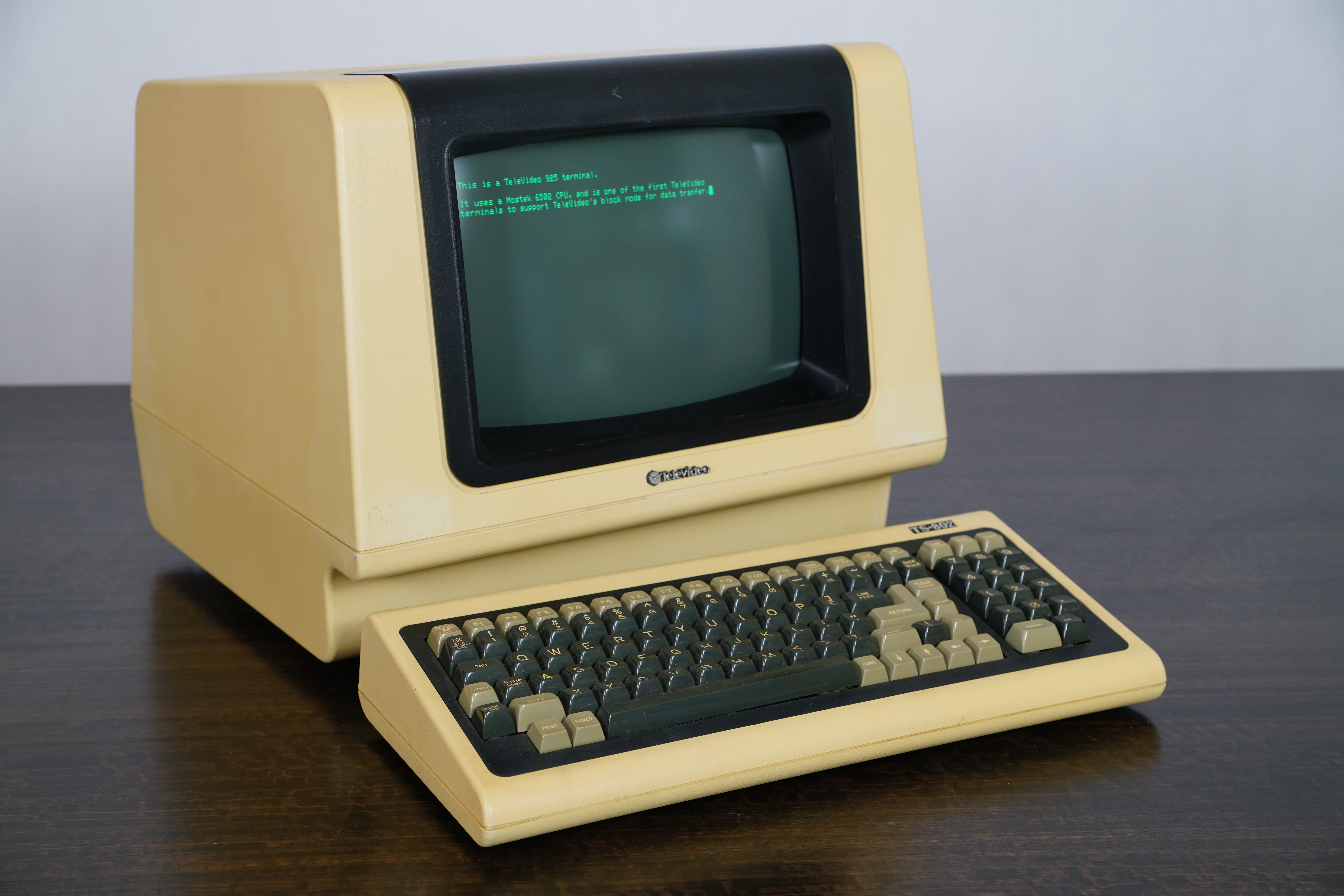
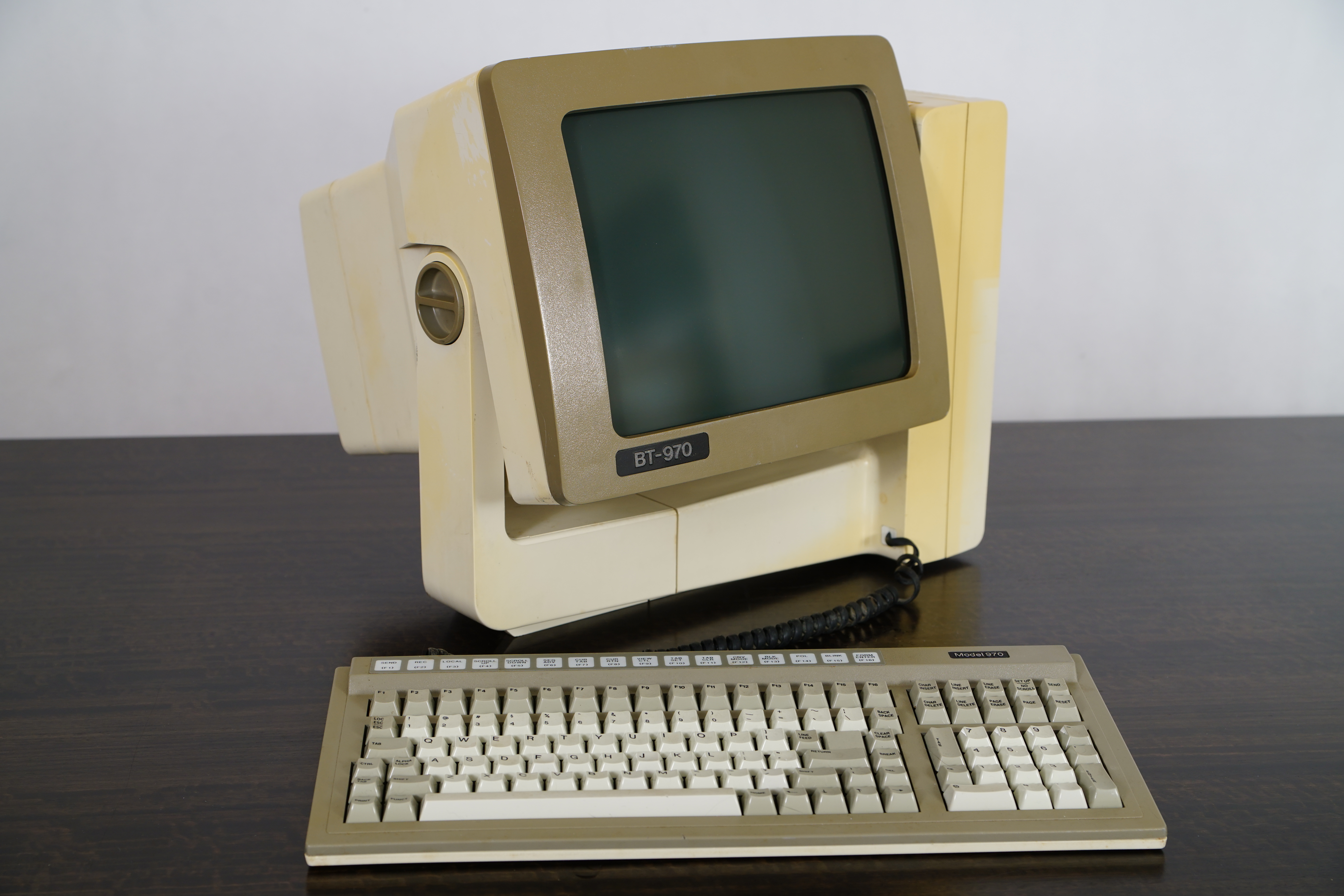

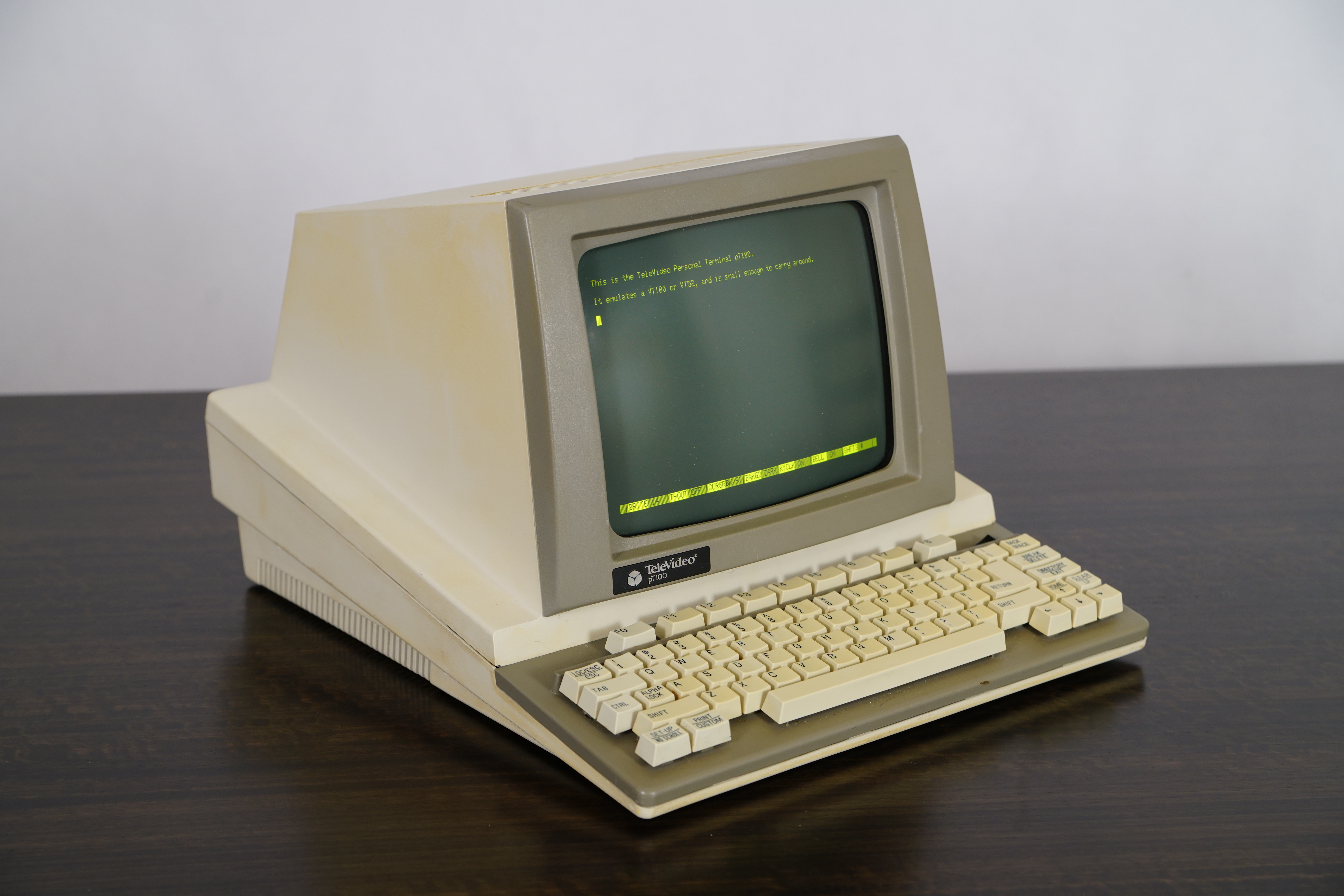
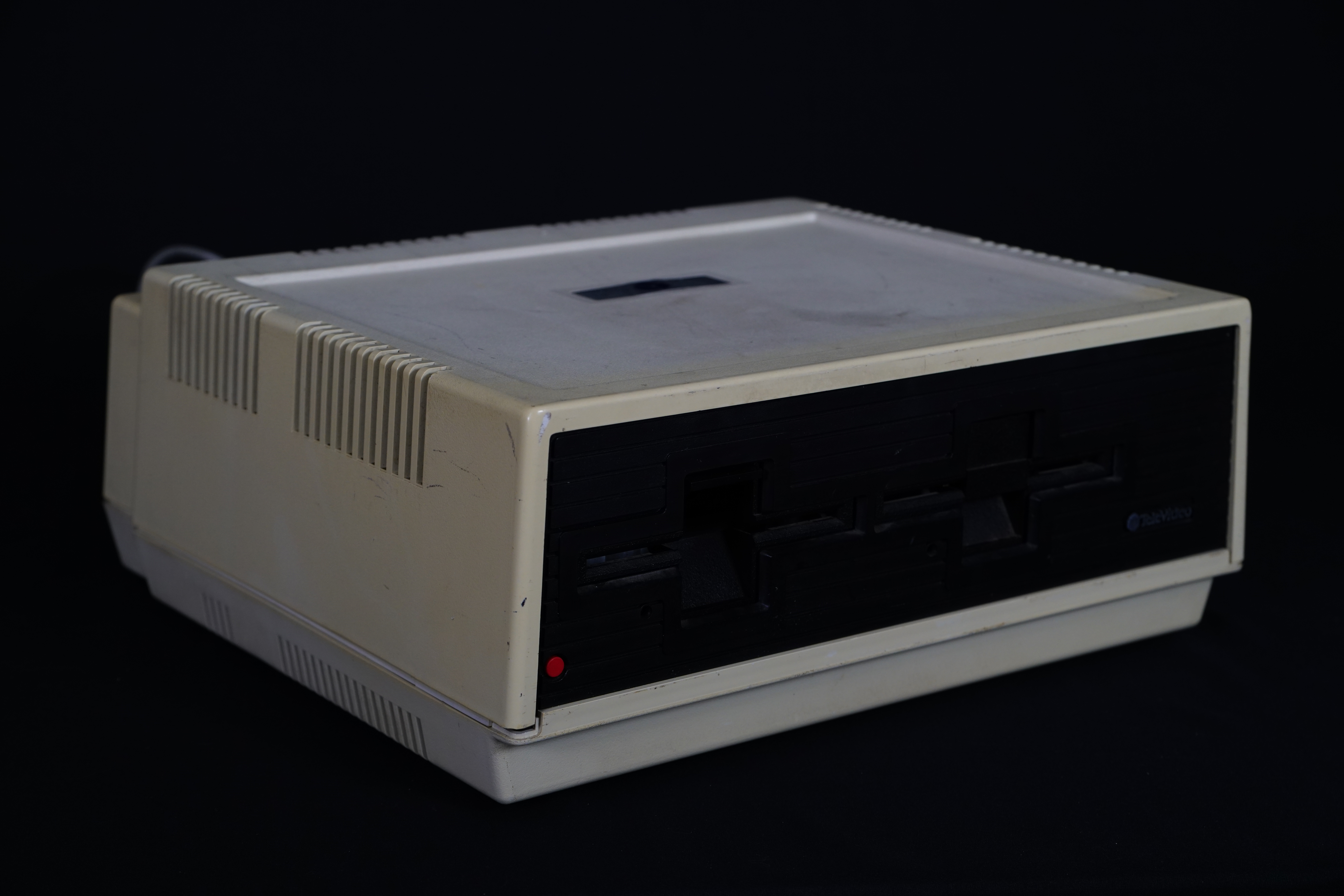
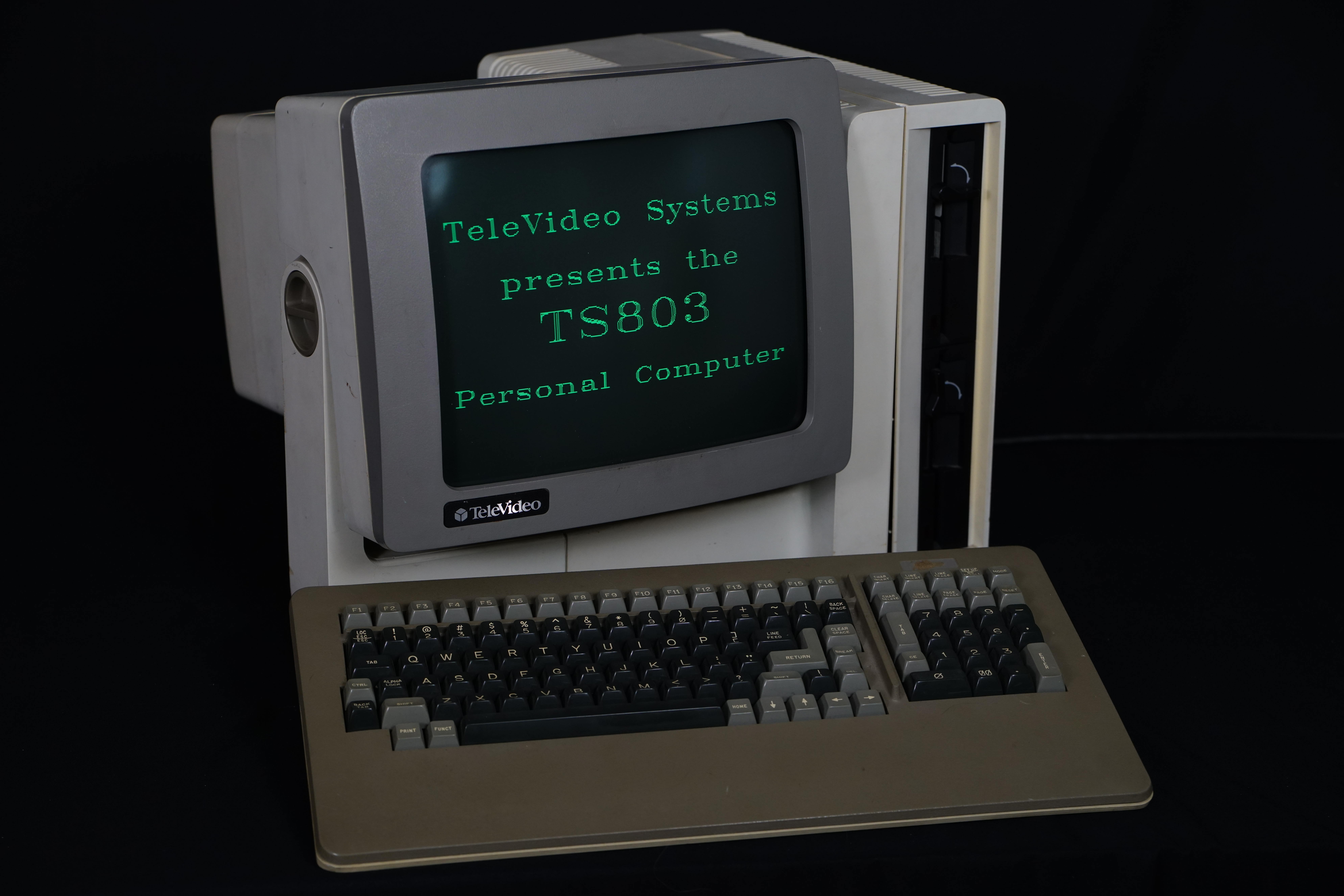
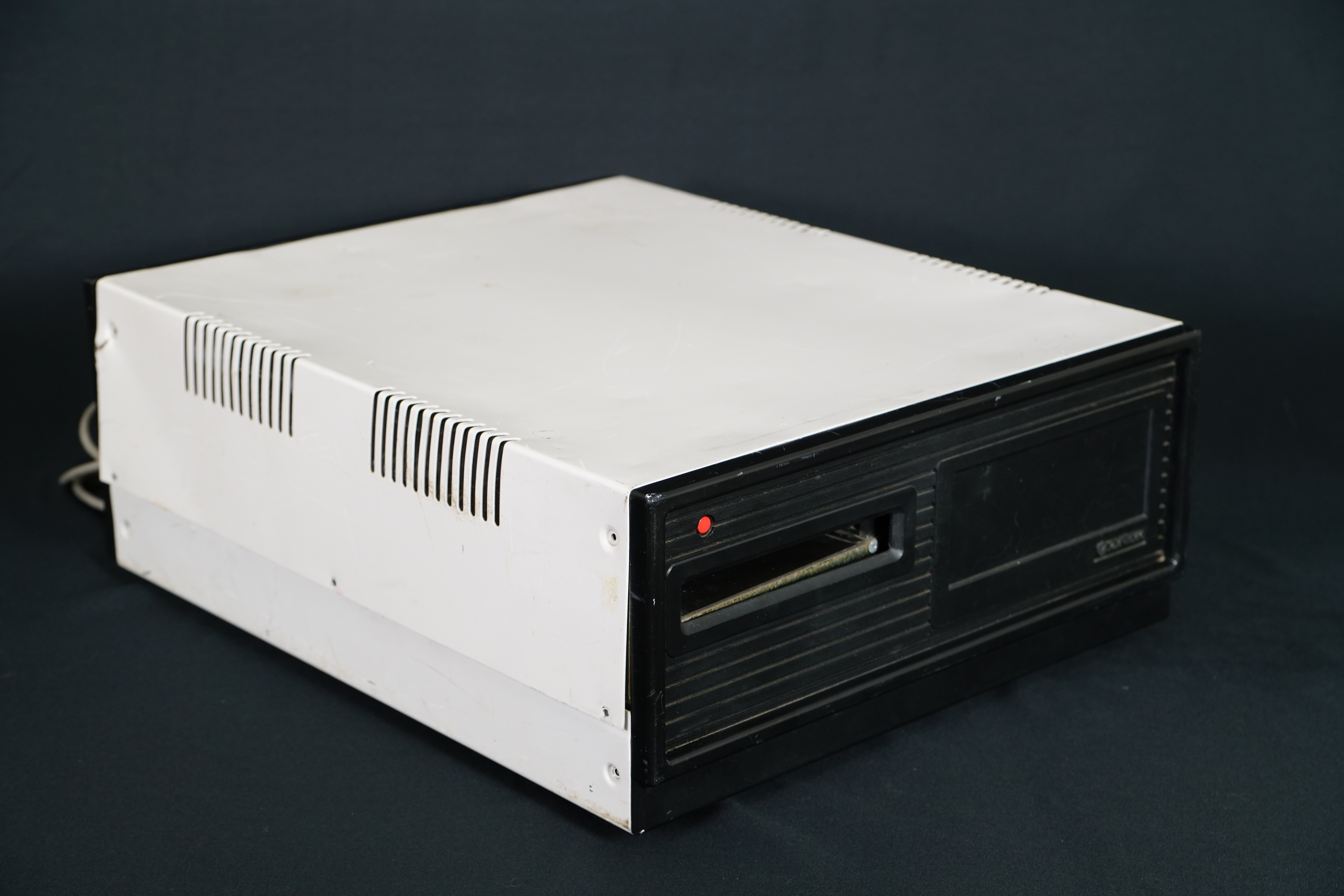
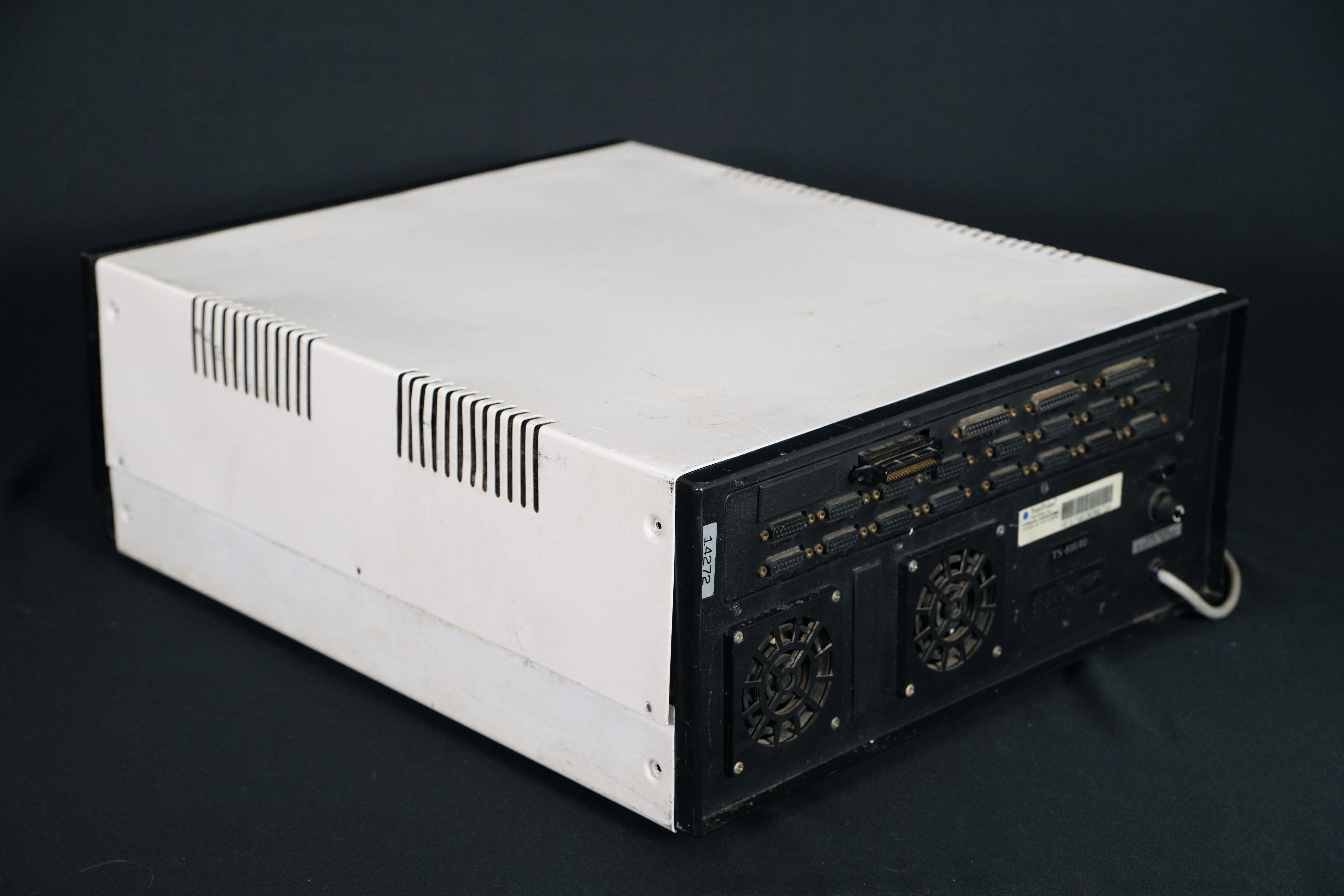
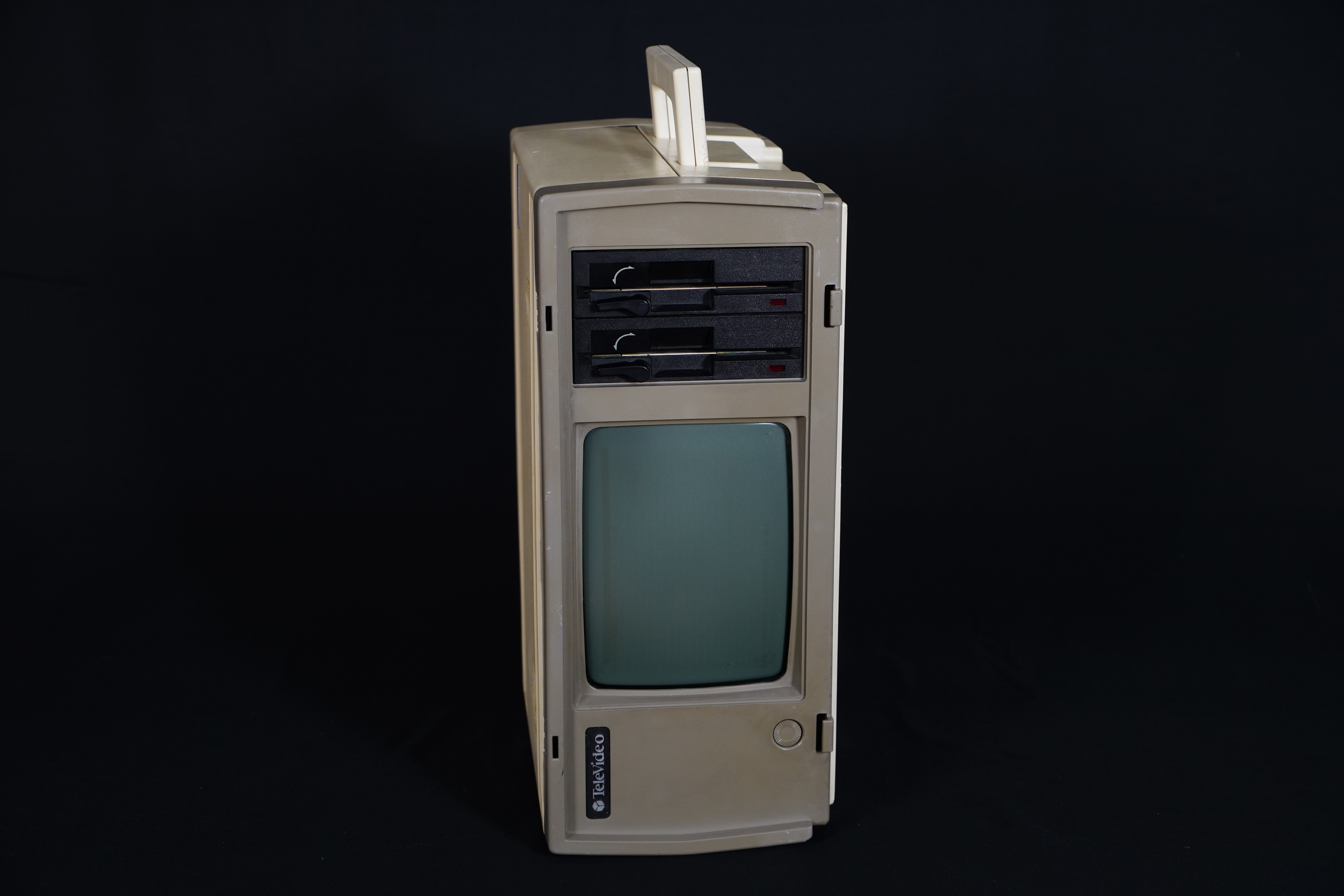
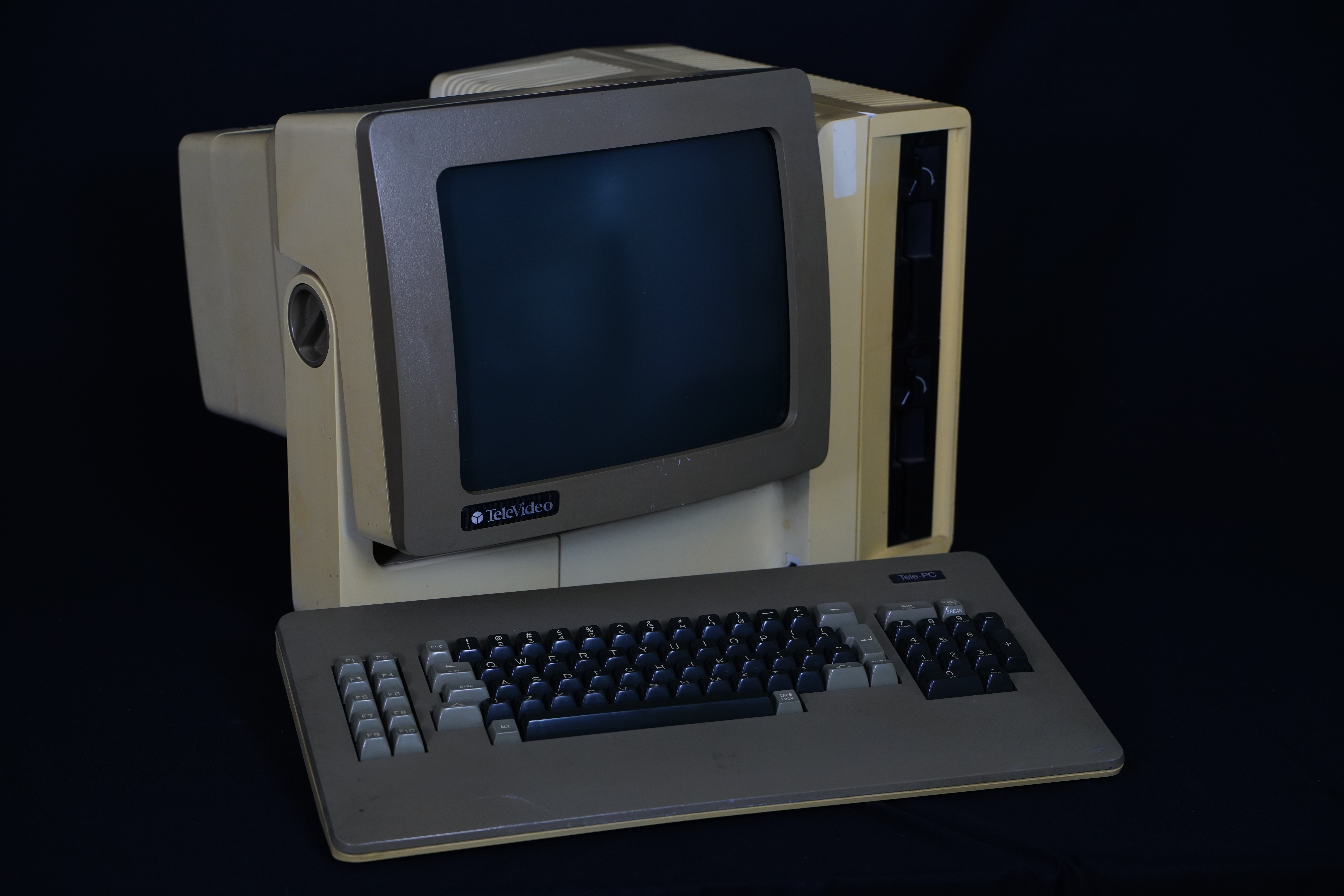
No comments:
Post a Comment